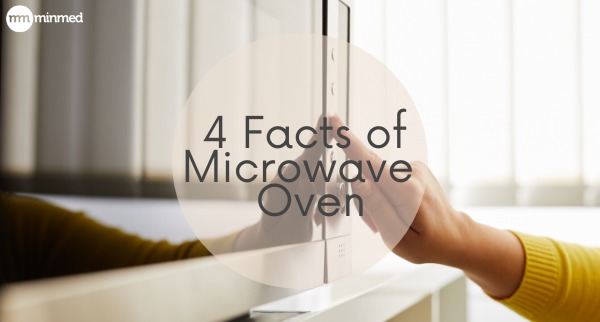4 Facts of Microwave Ovens

Microwave ovens are kitchen appliances that convert energy into electromagnetic waves, microwaves. Microwaves stimulate molecules in food, making them vibrate and clash into each other. These vibrating and clashing molecules generate heat energy. Microwave ovens work well with water molecules but can also heat up fats, oils and sugars.
Due to increasing affluence and rising standard of living for convenience in Singapore, the proportion of households with microwave ovens rose to 95% in recent years. Even with its popular demand, there are still some prejudices that people may have against microwave ovens.
Fact 1: Microwave ovens cook food from outside in.
Many believe that microwave ovens cook food from inside out, but it works the other way round. Microwave excites the water molecule and heats up only at the outer surface. The inner part of the food warms up as heat gets transferred from the outside in. While cooking a thick chunk of raw meat, the heat can only penetrate up to a depth of 3-cm.
Fact 2: Boiling a cup of water may cause an explosion in the microwave.
While heating water in a glass or ceramic cup, it can prevent bubbles from forming. When bubbles form, it generally cools down the liquid. In this case, when no bubbles are formed, water gets superheated passing its boiling point. When it gets disturbed (e.g. taking the cup out from the microwave) heat gets released violently, resulting in the eruption of boiling water out of the cup.
Similarly, with eggs, you should never put an egg in the microwave oven as the steam builds up faster than it can be released through the pores of the eggshell. Once the force is too strong, the egg will explode. To microwave a “sunny side up” is easy but you will need to prick the yolk of an unbeaten egg for the steam to escape safely.
Fact 3: Microwave kills nutrients.
When food is being exposed to heat, nutrients like Vitamin C, omega fatty acids and antioxidants and many others will be lost. This applies to cooking in general, not just microwaving. To cook vegetables in the microwave, it is best to cook it in the shortest amount of time with least amount of water. Nutrients from the vegetables will leach out into the cooking water, reducing the nutritional value. Ironically, microwave cooking can be considered the least form of cooking to damage nutrients in food. The longer food cooks, the more nutrients it breaks down.
Microwaving heats up food at a fast rate, resulting lesser nutrients loss. Roasting in an oven is more likely to cause more loss of nutrients than cooking the roast in a microwave oven.
Fact 4: Microwave is not the same as radiation from a nuclear plant.
“Radiation” always gives off a negative connotation. Radiation exists on a spectrum and microwaves are on the low end. Other rays such as x-ray or UV radiation are on the high end of the scale. Microwave is not linked to atomic bombs or nuclear disasters but of similar radiation to our mobile phones. X-ray or gamma rays are not used in to make the food radioactive. The food will not emit any microwave energy once the microwave oven is switched off. Simply, just imagine switching off a light switch. Once the light bulb goes off, no light is emitted. Moreover, microwave ovens have metal shields that prevent the radiation from leaving. Ensure that the door is tightly shut to reduce the amount of radiation leaking.
Most of the food that you can think off can be cooked using a microwave oven. But here comes the magic question, “Will the food cooked in the microwave oven taste similar to those cooked in an oven?” That will be a subjective answer depending on the person’s palate. Go and have fun in researching and cooking dishes using the microwave oven, you will be surprised!
Just a small tip, instead of preparing “Keropok” (shrimp/fish cracker) using the usual deep-frying method, try using a microwave. It becomes a healthier version of “Keropok” with less or no oil!
